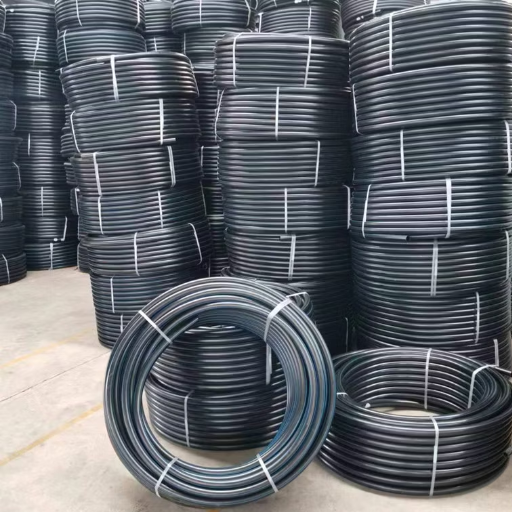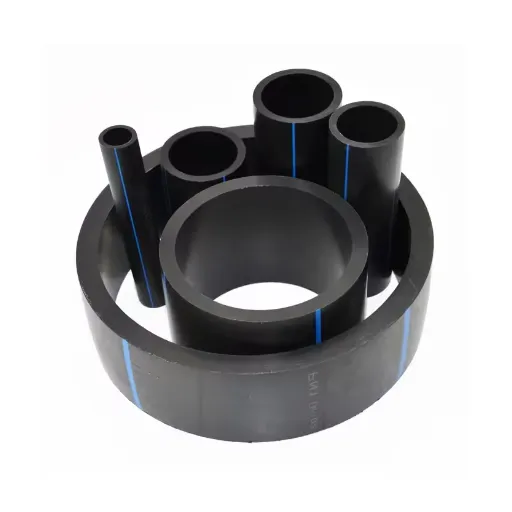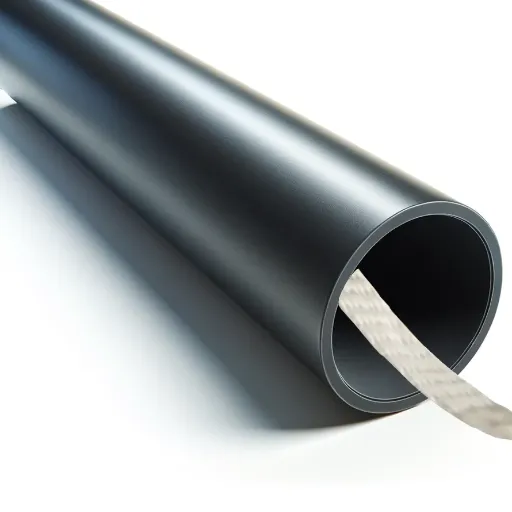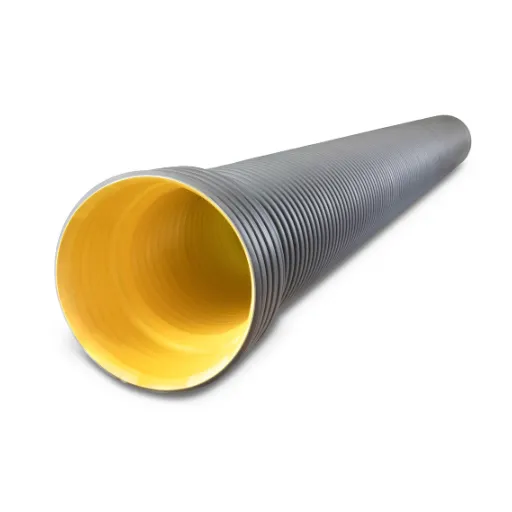High-Density Polyethylene (HDPE) pipes have become a pivotal component in modern water distribution systems due to their durability, flexibility, and superior performance. Among the various sizes available, the 1-inch HDPE water pipe stands out as a practical and versatile option for numerous applications, from residential plumbing to agricultural irrigation. This article explores the key advantages of using 1-inch HDPE water pipes, their wide range of applications, and a detailed guide to their efficient installation. Whether you’re a professional installer, a contractor, or simply someone interested in understanding plumbing innovations, this comprehensive guide will help you gain valuable insights into why HDPE pipes remain a preferred choice for water transportation solutions.
Benefits of Using 1-Inch HDPE Water Pipes
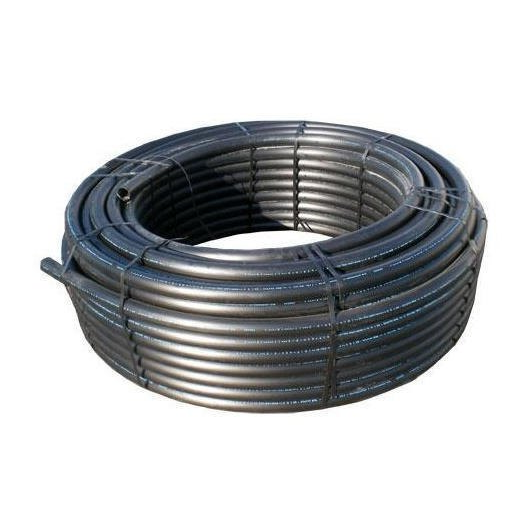
Flexibility and Durability
These pipes are the most sought-after due to their very high flexibility and durability, thus making them an apt solution for water supply distribution systems. With very flexible one-inch pipes, HDPE pipes bend along changes in terrain or external pressure and do not crack or break. This signifies a low probability of damage during installation or in the working life of the pipe, especially in seismic or ground movement-affected areas.
Durability, on the other hand, weighs in as another advantage of the HDPE pipes. They resist corrosion, chemical attack, and various environmental factors. HDPE does not rust or corrode like metals or concrete do when exposed to water, chemicals, or temperatures. This very resistance secures a longer service life and thereby reduces the repair incidences, eventually cutting down on repair costs.
Pipes may sustain very large internal and external pressures and hence allow for high-pressure water supply systems. Being tough against mechanical damage assures the pipes are a reliable option for both domestic and industrial use. Together, these qualities make 1-inch HDPE water pipes a sustainable and cost-efficient solution to consider for contemporary infrastructure projects.
Corrosion Resistance
HDPE water pipes are immensely resilient to corrosion, making them suitable for any water supply system. HDPE does not rust or corrode when exposed to oxygen, harsh chemicals, or moisture, unlike metal pipes. This characteristic renders HDPE water pipes highly durable in situations wherein corrosive elements exist in great potential-highly corrosive salts or acids that are usually found in industrial or coastal regions.
Corrosion resistance is further attributed to the non-reactive nature of HDPE. This highly crush-resistant plastic chemically resists the effects of aggressive agents, thus requiring no coating or any form of anti-corrosive treatment for maintenance. This offers a great ease of installation and reduces long-term operational costs related to maintenance or replacement that occur due to corrosion.
The smooth inner surface of the pipes is yet another property that prevents the building of incrustation deposits, which commonly leads to blockages or internal corrosion in traditional systems such as steel pipes or cast iron pipes, to some extent. Uninterrupted water flow through the pipeline structure is assured, emphasizing HDPE as a dependable material for water distribution works both on a smaller scale domestically and on a larger scale industrially. These features combined make HDPE water pipes robust and economical for all modern infrastructural needs.
Cost-Effectiveness Over Time
Its long-term cost advantage is the durability, low maintenance, and long lifespan that the HDPE water pipe has to offer. HDPE pipes will not lose their structural integrity even after several decades since they resist rust, scale, or cracking, unlike those of traditional colors. This will, hence, decrease the need for regular repairs and replacements, thereby reducing operational expenses and keeping the pipeline system functional without interruptions of heavy costs.
Using and installing them would in turn be doing another important cost factor; HDPE pipes are light and flexible, thus allowing for the rapid and efficient installation of the pipes compared with bulkier alternatives such as steel or ductile iron. Trenchless methods of installation can also be applied, which go on to reduce costs relating to labor, equipment, and restoration.
Finally, HDPE pipes are more able to resist external pressure caused by soil movement or root intrusion, which would otherwise cause premature failure and expensive maintenance in a conventional system. HDPE water pipes, being recyclable and environmentally friendly, make them an environmentally and economically sustainable solution for recent infrastructure projects being favored by governments and industries across the world.
Applications of 1-inch HDPE Water Pipes
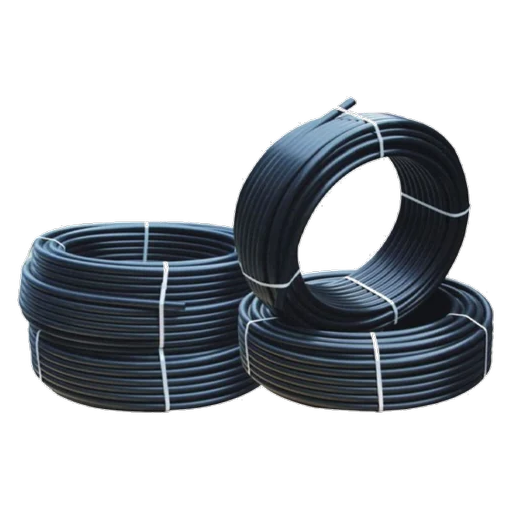
Residential Plumbing Systems
The 1-inch HDPE water pipes are an inspiringly modern solution for in-system plumbing due to their immense durability and adaptability to user-end conditions. These pipes resist corrosion, incrustations, and chemical attacks, which are frequently faced by metals or otherwise conventional materials. Another one of their benefits is that these pipes are lightweight, which reduces handling, transportation, and installation costs, especially if one chooses a plumbing layout of high complexity. Provided the choice is made right, HDPE can be laid within constricted or undulating routes in residential properties, allowing designers and installers to optimize the use of space involved.
One of the major selling points of using 1-inch HDPE water pipes in the residential space is their capability to withstand fluctuating pressure and temperature. HDPE pipes can retain their structural strength in places where water pressure frequently varies and hence assist in mitigating leakages or bursting incidents. HDPE pipes accommodate white water temperature in quite a big range, supporting either cold water or hot water supply lines in the same manner. Hence, they lessen the fixing and maintenance expenses of a house plumbing system, plus they last longer than many decades.
From the environmental standpoint, an HDPE water-piping system presents a positive reference point as a 100% recyclable plumbing material. The energy used to manufacture HDPE pipes is also less compared to the making of their traditional counterparts; hence, the carbon footprint is minimized. For the residential homeowner or developer who values sustainability, HDPE piping systems form a green alternative within eco-friendly building techniques. The alternative reuse value of decommissioning HDPE pipes serves as yet another feather in their cap vis-à-vis circular economic principles, giving them favor among contemporary house projects that aim toward sustainable design.
Agricultural Irrigation Solutions
Renowned water handling systems using High-Density Polyethylene (HDPE) piping for agricultural irrigation are setting a new bar for durability, efficiency, and sustainability. Being corrosive and chemical-resistant, contrary to steel and PVC pipes in general, HDPE pipes become suitable options to carry all sorts of water sources, such as untreated waste from town areas or salt water. These pipes remain under stress of any degree, withstanding harsh variations in temperature and extreme pressure during their intense performance, an attribute deeply needed for large irrigation systems.
The developments in the technology of HDPE pipes have uplifted the importance of precision irrigation, extending to drip irrigation systems designed to limit water wastage while maximizing crop yield. According to reports, precision irrigation systems utilize about 50% less water than flooding methods of irrigation. Plus, HDPE pipes are lightweight and flexible, better areas for simple transport and installation in large agricultural lands with uneven terrain.
With smart irrigation systems integrated with HDPE piping, on the other hand, water flow and distribution get optimized using IoT-based sensors and automation systems. Soil moisture levels, weather patterns, and crop requirements tracked in real-time can map and adjust water output requirements, making sustainable use of resources a reality. While reducing the need for consumption of freshwater sources, this sustainable approach also decreases costs for farming activities and therefore makes it more profitable in the long run for the farmers and developers.
Municipal Water Supply Networks
Referring to the backbone systems of urban and rural areas established for effectively delivering potable water into homes, offices, and industries, municipal water supply networks are comprised of a complex web of pipes, storage reservoirs, pumping stations, and treatment plants that provide clean and safe potable water to the population based on their usages. The integration of modern technologies such as GIS and SCADA has further increased the efficiency of the system, making it possible to monitor the water distribution paths and operational performances in real time.
In any given case, major issues relating to municipal water distribution include NRW (Non-Revenue Water) damage caused by leaks, theft, or inaccurate metering at about 25% to 30% worldwide, as termed by the International Water Association (IWA). Including advanced leak detection technologies, such as acoustic sensors and pressure monitoring systems, will reduce these losses significantly. Smart metering solutions also improve billing accuracy and promote water conservation among consumers. These modern solutions are in alignment with the overarching goals of infrastructure sustainability and resource efficiency.
More improvement is made with the adoption of IoT-enabled water management systems. By gathering data on parameters such as water pressure, flow rates, and quality in real-time, these systems allow for predicting maintenance needs, speeding issue detections within the network, leading to less downtime and repair costs, and the best service delivery. Employing these data-based systems in tandem with AI algorithms will also allow demand pattern forecasting and optimization of water allocation to ensure equitable distribution while avoiding over-extraction of water resources. Therefore, with the help of smart technology, the municipal water supply networks will be able to meet the rising demands of urbanization and climate resilience.
Installation Tips for HDPE Water Pipes
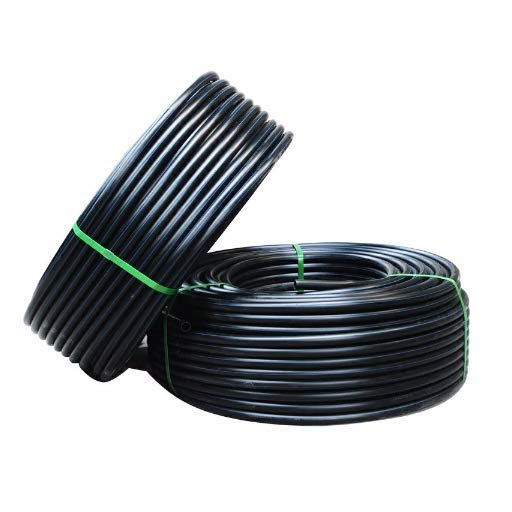
Step-by-Step Installation Guide
- Site Preparation: Initially, this involves inspecting the installation site to ensure it is clear of obstacles and debris. The trench should be excavated to the required depth, keeping a steady width and proper slope for drainage. Local regulations and standards for excavation depth should be adhered to. Depending on the application, excavation depth is generally between 18 and 36 inches for buried HDPE pipes.
- Inspect the HDPE Pipes and Fittings: Inspect all HDPE pipes and fittings to detect any visible defects such as cracks or deformation before installation. Measure and mark pipes for their full delivery lengths to ascertain that they are of the specified length and specification as per the design requirements of the project.
- Aligning the Pipes: Place the pipes in the trench, ensuring they are properly aligned. Use pipe rollers to avoid structural deformation during handling. Maintain a sufficient distance between multiple pipes to allow for thermal expansion so that they do not rub against adjacent installations.
- Jointing Process: The most common method to join HDPE pipes is fusion welding, be it butt fusion or electrofusion, as it provides strong, leak-proof joints. An operator should follow the welding equipment manufacturer’s instructions carefully, including setting the proper temperature and pressure. Then the joint should be allowed to cool for a sufficient time to obtain full joint strength.
- Pressure Testing: The pressure test ensures the installed pipeline’s integrity. Slowly fill the structure either with water or compressed air and detect leaks with a gauge measurement. Put backfilling any eliminated anomalies.
- Backfilling the Trench: The pipe bedding shall be done using fine-grained sand or graded granular materials approved, followed by backfilling. Continue placement of fill material while compacting evenly to provide adequate support, but also not enough to cause damage to the pipe. Sharp and heavy rocks should be avoided as they exert concentrated pressure on the pipes.
- Final Acceptance: This is to ensure that all installations have been performed by approved design specifications and safety standards. Record all installation data of vital importance, such as the temperature at which welding was performed, pressure testing results, and measurements of alignment for future use.
The joint method of installing HDPE water piping means that this operation is efficient and ensures the pipeline system remains in place for a long time and performs optimally.
Common Mistakes to Avoid
- Improper Fusion Procedure: One of the critical errors in the installation of HDPE piping is the fusion technique. If the correct temperature, pressure, or heating duration is not met during the butt fusion process, the joints will be weak and will further compromise the strength of the pipeline with time.
- Insufficient Pipe Alignment: Another common error is misalignment during welding or joining. Any slight misalignment causes stress concentrations in the joint and thus has an increased potential to fail under pressure and hinder the desired flow rates. One would always use alignment tools to certify the proper positioning before proceeding to operational efficiency.
- Disregarding Weather Conditions: Environmental variables like ambient temperature, humidity, or contaminants at the job site may have an extremely adverse effect on the installation process. For example, welding in very low temperatures with no adjustments may lead to brittle welds. Likewise, while preparing the surfaces, if one fails to clean properly, the debris or moisture gets into the seal, weakening the joining.
- Insufficient Pressure Testing: Avoiding or skipping pressure tests, or performing them inadequately on the installed pipeline, are all too frequent faults. Pressure testing validates that the system is able to withstand the required operating conditions without leakage or failure. Operators, hence, must perform tests within industry norms so as to detect hidden defects before commissioning.
- Overlooked Pipe Storage and Handling Procedures: Pipes may be damaged during storage and handling. If HDPE pipes are stored under excessive weight, deformation may occur. Likewise, HDPE pipes exposed to direct sunlight for long periods tend to become brittle. Hence, improper storage practices can cause more damage than operational hazards. Storage requirements would be, therefore, to shade the pipes and stack them horizontally with supports.
Avoiding these common mistakes increases not only the longevity and performance of the HDPE water piping system but also significantly reduces the cost of maintenance and downtime. Accurate record-keeping, periodic inspections, and strict adherence to procedures warrant sustainable and reliable ends throughout all steps of pipeline installation.
Tools and Materials Needed for Installation
It is necessary to have a set of specific tools and materials for the proper installation of HDPE water piping systems. The first cutting tools include pipe cutters or mechanical saws that can be used to cut pipes accurately into lengths. Pipe ends must be cut smoothly and squarely to facilitate an accurate jointing operation. Alignment tools such as clamps or pipe aligners are also quite important since they help in proper alignment and prevent displacement of joints when being fused or connected by whatever means.
Fusion equipment warrants a separate class of tools, which very much depends upon fusion being carried out. A machine suitable for butt fusion must be used to butt fuse, whereas another machine is needed for electrofusion. Butt fusion machines use fixtures to hold the pipes in position, a heating plate to uniformly melt the pipe ends, and a mechanism to apply pressure evenly during the cooling period. Electrofusion fitting tools include a barcode scanner to feed fusion parameters to the box and an electrofusion control box to control the actual fusion.
Besides these special tools, a canvas of standard construction materials and accessories is used, such as measuring tapes, markers, pipe cleaners, and tools for surface preparation. These are used to sufficiently prepare pipe surfaces to avoid any contamination that ensures a good bond. Safety gear to include gloves, safety spectacles, and hard hats, must also be provided for the protection of all involved during the installation activities. Through the proper use of appropriate tools and materials, the installation shall be carried out to keep up with the installation standards and the long service of systems.
Cost Comparison of HDPE Water Pipes
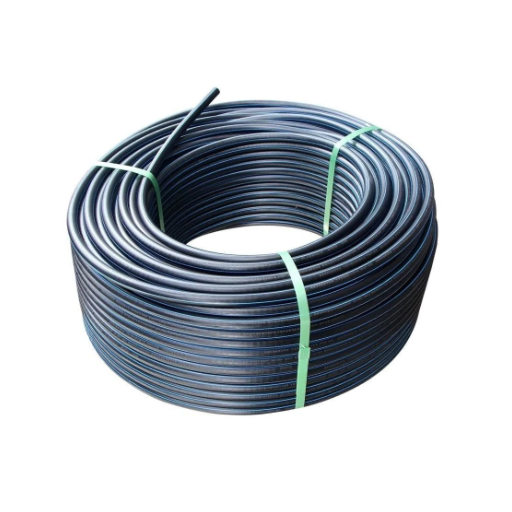
Comparative Analysis with Other Pipe Materials
When compared with PVC and copper, HDPE pipes stand resilient in durability, imparting more flexibility in installation operations and in prices. Besides, they are also eco-friendly.
|
Aspect |
HDPE |
PVC |
Copper |
Metal |
|---|---|---|---|---|
|
Strength |
High |
Moderate |
High |
Moderate |
|
Flexibility |
Excellent |
Low |
Low |
Low |
|
Rust Proof |
Yes |
Yes |
No |
No |
|
Expense |
Moderate |
Low |
High |
High |
|
Eco-Friendly |
Yes |
No |
No |
No |
|
Pressure |
High |
Moderate |
Moderate |
Moderate |
|
Temp Range |
Wide |
Narrow |
Moderate |
Moderate |
|
Longevity |
50+ yrs |
20-30 yrs |
20-50 yrs |
10-20 yrs |
|
Ease of Use |
Easy |
Moderate |
Hard |
Hard |
Factors Influencing Overall Cost
The overall cost of HDPE water pipes is determined by material-specific attributes, installation requirements, and lifecycle considerations. Major factors include:
- Material Costs: HDPE pipe cost is a function of resin grade, wall thickness (SDR rating), and raw-material-price fluctuations. HDPE holds its own in pricing with traditional pipes like ductile iron or copper, but changing crude oil and natural gas prices hit the costs as polyethylene is polymerized therefrom.
- Installation Efficiencies: Being lightweight and flexible, HDPE pipes offer cheap transportation and ease of handling during installation. Utilization of trenchless tech, including horizontal directional drilling (HDD), further cuts excavating time and labor as compared with traditional open-trench methods.
- Durability and Maintenance Cost: HDPE will last about 50 years, so under good conditions, the replacement and maintenance costs will be quite low. Being resistant to corrosion, chemical reaction, and scaling will increase the durability and reduce the maintenance cost in comparison with metallic pipes.
- Energy and Environment Costs: HDPE pipes are considered environmentally friendly due to their lower energy consumption during production and recyclability. Coefficients of friction, being quite low, contribute to energy-efficient fluid transport, a prime factor toward long-term savings.
- Site-Specific Challenges: Certain challenges at the site level, especially regarding soil composition, terrain, and regional laws, may heavily influence cost variation. Regions with costly labor or stringent permitting standards will demand higher investments.
In brief, the decision-makers will compare HDPE with other materials adequately when considering the aforementioned factors along with a total cost of ownership (TCO) model, taking price implications into account from both initial and maintenance perspectives.
Maintenance Advice for HDPE Water Pipes
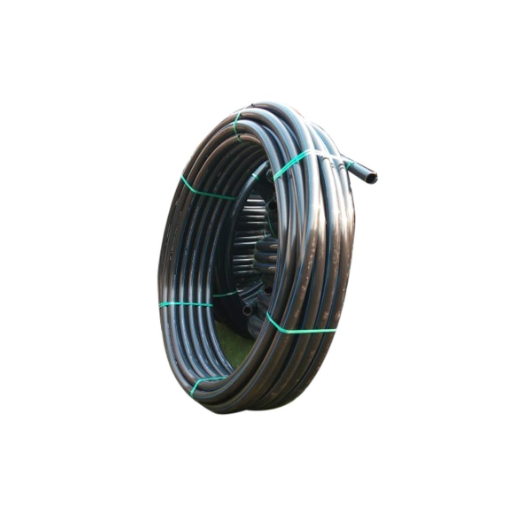
Inspecting for Wear and Damage
To ascertain the continued suitability of HDPE water piping and prevent costly failures, it has to undergo regular inspections. Visual inspections are advised at periodic intervals, aimed at detecting visible wear comprising abrasions, surface scratches, or gouges. Extra care must be taken where stress levels are highest, such as at joints and fittings, since such locations have a higher possibility of damage due to pressure variations or misalignment during installation.
In the case of more elaborate inspections, ultrasonic examination is probably used. This is a non-destructive type of inspection that can detect internal discontinuities such as voids, cracks, and so forth, without harming the piping system. Hence, checking for environmental stress cracking (ESC) is important, particularly with areas vulnerable to UV radiation or chemical exposure, for this could in due course impede the pipe’s structural integrity. In addition, ensuring all joints remain tightly fastened and leak-free is imperative; even the smallest of leaks can cause serious operational inefficiencies and water loss.
By keeping up these regular inspection routines, it is possible not just to add to the life expectancy of the HDPE pipes but also to sustain a consistent and reliable water distribution system. Hence, all these work in lowering the total ownership cost.
Preventive Measures to Extend Lifespan
To achieve the maximum operating life of HDPE pipes, preventative measures need to be combined in all their steps. A good monitoring system that makes use of sensors and IoT technology can be set up so that pressure and flow level data, as well as information on external stresses, are collected in real time. Thus, active steps can be taken technically with actionable insights to address any arising issues or incidents when scores and fronts are forming. For example, remote monitoring integrated with predictive analytics can detect patterns indicative of stress or fatigue in the pipe network, thus allowing intervention on time.
Periodic cleaning and descaling of the pipes are also important to avoid sedimentation that could restrict flow efficiency and pose additional strain. Non-invasive methods, such as hydro-jetting, provide efficient cleaning while ensuring the pipes’ integrity is not compromised. Next, regular analyses of soil composition at installation sites are needed since corrosive or unstable soil might cause abrasion or external deformation, thus requiring additional intervention in the form of encasement or special coating.
Selection of high-grade joint fittings and proper welding techniques during installations could, therefore, also limit failures occurring at the joints, which are the common weak point of pipelines. Strict adherence to established best practices and utilizing the most modern tools designed for HDPE materials would minimize wear and tear resulting from incompatible materials. By bringing together such prevention measures along with the latest technical advancements, long-term function and the economic use of HDPE pipe systems can be achieved by the stakeholders.
Best Practices for Regular Maintenance
A thorough and well-structured maintenance program is essential in prolonging the operational life and retaining the functionality of HDPE pipe systems. Establishing a regular inspection schedule is imperative in the early detection of any signs that may show unexpected wear, damage, or environmental issues that may jeopardize the system. Such inspections should focus on joints, fittings, and all areas exposed to high degrees of stress or chemical exposure. NDT methods, including ultrasonic testing and infrared thermography, can be applied to garner exact information on the structural integrity of the pipes without causing interruption to operations.
In addition to inspections, implementing a cleaning schedule is all-important for the prevention of clogging and buildup of debris, especially in systems designed to handle wastewater or industrial waste fluids. The flushing of such systems with sanitizing agents that are compatible with HDPE material will ensure that the cleaning agents help maintain the flow rate of the system while preventing a chemical reaction with the pipes. More recently, advanced monitoring technologies, such as pressure sensors and flow meters, have been able to offer real-time tracking of performance in any given area of the system. Early detection of abnormalities paired with quick resolution reduces the possibility of slight faults developing into severe failures.
An important factor is the documentation of all maintenance works and related findings. Up-to-date maintenance records of inspections, repairs, and modifications to the system facilitate compliance with regulatory standards and ease troubleshooting. These everyday practices, combined with predictive maintenance opportunities generated by analysis and prediction programs via data analytics and machine learning, line up for the best reliability and highest savings on operational costs all along. This sets HDPE pipe systems on a path to effective running, even in adverse scenarios.
References
Frequently Asked Questions (FAQ)
Q: What is a 1-inch HDPE water pipe?
A: A 1-inch HDPE water pipe is a high-density polyethylene pipe designed for water supply systems. It features an outside diameter that allows for effective fluid transport, making it suitable for both residential and industrial applications.
Q: What are the pressure ratings for 1-inch HDPE water pipes?
A: The pressure ratings for 1-inch HDPE water pipes can vary. Common ratings include 160 psi and 200 psi, with some products designed to handle higher pressure ratings depending on the application.
Q: What materials are used to manufacture 1-inch HDPE water pipes?
A: 1-inch HDPE water pipes are primarily manufactured from high-density polyethylene (HDPE), specifically using raw materials like PE4710 or PE100, which provide excellent durability and flexibility.
Q: How does the diameter of the pipe affect water flow?
A: The diameter of the pipe, including the outer diameter, plays a crucial role in determining water flow rates. A larger diameter allows for greater flow capacity, which is essential in main water supply systems.
Q: Are 1-inch HDPE water pipes resistant to corrosion?
A: Yes, 1-inch HDPE water pipes are non-corrosive and exhibit excellent chemical resistance. This makes them ideal for long-term use in various water applications, including irrigation and water supply systems.
Q: What are the advantages of using coil pipes for irrigation?
A: Coil pipes, such as 1-inch HDPE water pipes in coil form, offer flexibility and ease of installation. They minimize joints and fittings, reducing potential leak points in sprinkler irrigation systems.
Q: Can I connect 1-inch HDPE water pipes using compression fittings?
A: Yes, compression fittings are commonly used to connect 1-inch HDPE water pipes. These fittings ensure a secure and leak-free connection, making them suitable for various applications in water systems.
Q: What are the common applications for 1-inch HDPE water pipes?
A: 1-inch HDPE water pipes are used in various applications, including residential plumbing, irrigation systems, and industrial water supply. Their durability and non-toxic properties make them a preferred choice.
Q: What temperature range can 1-inch HDPE water pipes withstand?
A: 1-inch HDPE water pipes can typically withstand temperatures up to 140 degrees Fahrenheit. However, the exact range may vary based on the specific product and its pressure class.
Q: How cost-effective are 1-inch HDPE water pipes?
A: 1-inch HDPE water pipes are considered cost-effective due to their long lifespan, low maintenance requirements, and corrosion resistance, making them a smart investment for both residential and industrial water systems.



